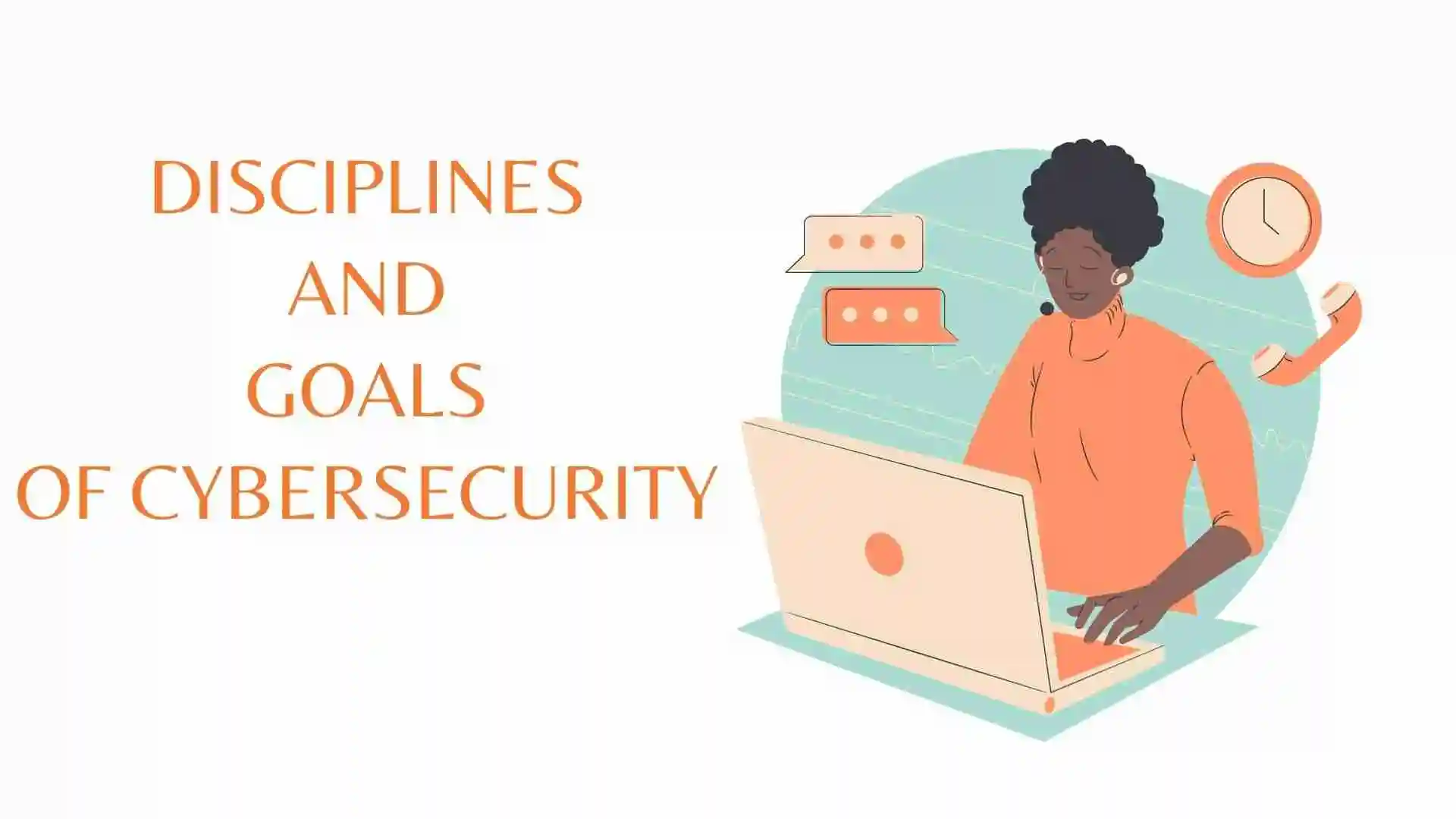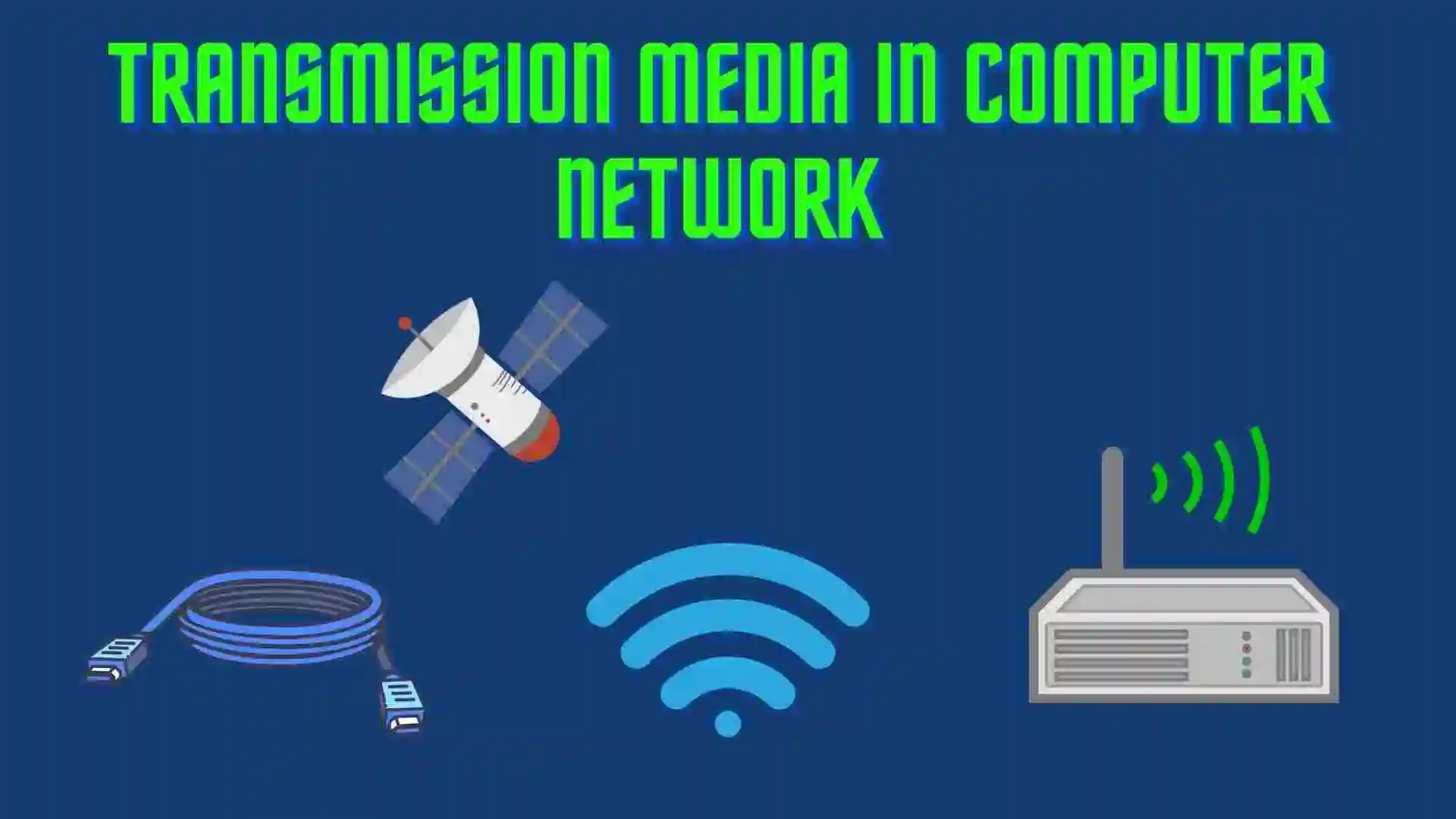In this blog, you will learn about the Disciplines and Goals of Cyber Security. I covered all the essential topics related to that and gave some tool names so that we can achieve all disciplines of Cybersecurity. So let’s get started with the blog.
Table of Contents
- Introduction
- Disciplines of CyberSecurity
- Goals of CyberSecurity
- FAQ
- Recent Articles on Computer Networks
- Related Articles on Linux
Introduction
Before learning about the Disciplines of cybersecurity, we must know what cybersecurity really is. Cybersecurity protects computer systems, networks, programs, and data from unauthorized access, use, disclosure, disruption, modification, or destruction. It involves implementing measures and technologies to prevent and mitigate potential threats and vulnerabilities in the digital realm.
Disciplines of CyberSecurity
Disciplines of cybersecurity address various aspects of protection, including:
A) Information Gathering
Information gathering, also known as reconnaissance or footprinting, is an essential phase in cybersecurity. It involves collecting relevant data and intelligence about a target system, network, or organization.
This information is valuable for understanding the potential vulnerabilities and attack surface, enabling security professionals to take proactive measures to protect against potential threats.
However, it’s important to note that information gathering should only be performed within legal and ethical boundaries.
Some important information-gathering tools are Nmap, Nikto, and Unicornscan.
B) Vulnerability Analysis
Vulnerability analysis, also known as vulnerability assessment or vulnerability scanning, is a critical process in cybersecurity that focuses on identifying and evaluating vulnerabilities in computer systems, networks, applications, and infrastructure.
It involves systematically scanning and analyzing the target environment to discover potential weaknesses that could be exploited by attackers.
It identifies the threats and assesses their risk to protect systems and data from unauthorized access.
Some important Vulnerability Analysis tools are DotDotPwn, Lynis, Sfuzz, and OpenVAS.
C) Web Application Security
Web application security is a crucial aspect of cybersecurity that focuses on protecting web applications from various threats and vulnerabilities.
Web applications, such as online banking portals, e-commerce platforms, and social media sites, are commonly targeted by attackers due to their accessibility and potential for financial gain or data theft.
It protects the website and online services against different security threats that exploit vulnerabilities in an application’s code.
Some important Web Application Security tools are Blind Elephant, Dirbuster, Burpsuite, and WPScan.
D) Password Attacks
Password attacks are techniques used by attackers to gain unauthorized access to user accounts by exploiting weaknesses in passwords.
These attacks aim to guess, crack, or bypass passwords to compromise user accounts, gain unauthorized privileges, potentially access sensitive information, or perform malicious activities.
Passwords are the primary form of authentication and have also been subjected to various forms of attack over the years.
Some important Password Attack tools are BruteSpray, CeWL, John the Ripper, and HashCat.
E) Wireless Attacks
Wireless attacks refer to security threats and techniques aimed at exploiting vulnerabilities in wireless networks, such as Wi-Fi, Bluetooth, or cellular networks.
These attacks can compromise the confidentiality, integrity, or availability of wireless communications and the devices connected to them.
It can shut down the wireless network, steal information flowing through the network, and result in identity theft.
Some important Password attack tools are Aircrack-NG, Kismet, and Crackle.
F) Reverse Engineering
Reverse engineering is the process of analyzing a technology, system, or piece of software to understand its design, functionality, and behavior.
It involves deconstructing and examining the components, structure, and algorithms of a product to gain insights into its inner workings.
Kali Linux comes equipped with reverse engineering tools that help you tear down applications and services to their bare bones, revealing vital information about them.
Some important Password attack tools are apktool, dex2jar, OllyDbG, and JDGUI.
G) Exploitation Tools
Exploitation refers to the act of taking advantage of vulnerabilities or weaknesses in computer systems, networks, or software to gain unauthorized access or control or perform malicious activities.
Exploitation is typically performed by malicious actors or hackers with the intent to compromise the security and integrity of the targeted system.
Some important exploit tools are Metasploit, BeEF, RouterSploit, and Netcat.
H) Sniffing and Spoofing
Sniffing and spoofing are two techniques used in cybersecurity, but it’s important to note that they can be used for both legitimate and malicious purposes.
Sniffing, also known as network sniffing or packet sniffing, is the process of capturing and analyzing network traffic.
It involves intercepting and examining packets of data that are transmitted over a network. Sniffing can be done using specialized software tools or hardware devices, such as network analyzers or packet sniffers.
Spoofing involves the manipulation or falsification of network or system parameters to deceive or impersonate legitimate users, systems, or devices.
Some important Sniffing and Spoofing Tools are Hexinject, Wireshark, Burpsuite, and BetterCap.
I) Forensic Tools
Forensics in cybersecurity refers to the practice of collecting, analyzing, and preserving digital evidence related to security incidents, cybercrimes, or other malicious activities.
Cybersecurity forensics plays a crucial role in investigating and understanding the nature of cyber incidents, identifying the perpetrators, and aiding in legal proceedings.
Some important Forensic Tools are Bulk extractors, Dumpzilla, Volatility, and Maltego.
J) Maintaining Access
Maintaining access, also known as persistent access or maintaining persistence, is a technique used by attackers in cybersecurity to maintain unauthorized access to a compromised system or network over an extended period of time.
It allows attackers to continue their malicious activities, gather sensitive information, or launch further attacks without being detected or losing access.
In simple words, it is the process of maintaining a connection with the already-hacked system to access it later.
After the attacker has set up a backdoor for the target, various tools are used to maintain this backdoor so that a payload can be executed.
Some important Forensic Tools are Nishang, Weevely, Powersploit, and Cryptcat.
K) Hardware Hacking
Hardware hacking in cybersecurity involves manipulating or exploiting the physical components of a computer system or electronic device to gain unauthorized access, extract sensitive information, modify functionality, or perform other malicious activities.
It is a specialized field that focuses on the vulnerabilities and weaknesses present in hardware devices.
Some important Hardware Hacking Tools are Arduino, the Android SDK, and Smali.
L) Stress Testing
Stress testing, also known as load testing or performance testing, is a cybersecurity practice that involves evaluating the resilience and stability of a system or application under various demanding conditions.
The goal is to assess how well the system can handle high loads, excessive traffic, or resource-intensive activities, and to identify any performance bottlenecks or vulnerabilities.
Stress Testing exposes software systems to simulated cyberattacks, revealing potential weaknesses and vulnerabilities in their implementation, which can then be corrected prior to deployment and lead to improved software quality.
Some important Stress tests are Funkload, MDK3, and Reaver.
M) Reporting Tools
In cybersecurity, reporting tools play a crucial role in collecting, analyzing, and presenting information related to security events, incidents, vulnerabilities, and overall system or network health.
These tools provide insights into the security posture of an organization, aid in compliance requirements, and facilitate decision-making processes.
Some important Stress tests are Dradis, MagicTree, and Metagoofil.
Goals of CyberSecurity
The three primary goals of cybersecurity are often referred to as the CIA triad, which stands for Confidentiality, Integrity, and Availability.
These goals outline the fundamental objectives that organizations strive to achieve in order to protect their information systems and data from unauthorized access, modification, or disruption. Here’s a brief overview of each goal:

Confidentiality
Confidentiality aims to ensure that sensitive information is only accessible to authorized individuals or entities. It involves implementing measures to protect data from unauthorized disclosure or access. Encryption, access controls, and secure communication channels are examples of mechanisms used to preserve confidentiality.
- Goal: Confidentiality ensures that information is accessible only to authorized individuals and that unauthorized access is prevented.
- Importance: Protecting sensitive data (e.g., personal, financial, and intellectual property) from unauthorized disclosure is critical to maintaining trust and compliance with privacy regulations.
- Methods: Encryption, access controls, data masking, and secure transmission mechanisms help maintain confidentiality.
Integrity
Integrity focuses on maintaining the accuracy, consistency, and trustworthiness of data and systems. It involves safeguarding information from unauthorized modification, tampering, or corruption. Techniques such as data validation, checksums, digital signatures, and secure backups are employed to maintain data integrity.
- Goal: Integrity ensures that data remains accurate, complete, and unaltered during its entire lifecycle, guarding against unauthorized modifications.
- Importance: Maintaining data accuracy and trustworthiness is crucial for decision-making, compliance, and preventing data tampering or corruption.
- Methods: Data validation, checksums, digital signatures, access controls, and version control mechanisms help ensure data integrity.
Availability
Availability refers to the accessibility and usability of information and systems when needed. It ensures that authorized users can access data and services without disruption or delay. Measures such as redundancy, fault tolerance, backup systems, and disaster recovery plans are implemented to maximize system availability and minimize downtime.
- Goal: Availability ensures that systems, data, and services are available and accessible to authorized users when needed, and disruptions are minimized.
- Importance: Uninterrupted access to critical resources is vital for business operations, productivity, and maintaining user satisfaction.
- Methods: Redundancy, backups, disaster recovery plans, fault tolerance, and DDoS protection contribute to maintaining availability.
By striving to achieve these three goals, organizations can enhance the security and resilience of their information systems, protect against threats and attacks, and ensure the confidentiality, integrity, and availability of sensitive data.
Note: This blog is mainly referenced or taken from GeeksforGeeks.
FAQ
The three primary goals of cybersecurity are often referred to as the CIA triad, which stands for Confidentiality, Integrity, and Availability.
Confidentiality:
Confidentiality aims to ensure that sensitive information is only accessible to authorized individuals or entities. It involves implementing measures to protect data from unauthorized disclosure or access. Encryption, access controls, and secure communication channels are examples of mechanisms used to preserve confidentiality.
Integrity:
Integrity focuses on maintaining the accuracy, consistency, and trustworthiness of data and systems. It involves safeguarding information from unauthorized modification, tampering, or corruption. Techniques such as data validation, checksums, digital signatures, and secure backups are employed to maintain data integrity.
Availability:
Availability refers to the accessibility and usability of information and systems when needed. It ensures that authorized users can access data and services without disruption or delay. Measures such as redundancy, fault tolerance, backup systems, and disaster recovery plans are implemented to maximize system availability and minimize downtime.
The disciplines of CyberSecurity are as follows:
A) Information Gathering
B) Vulnerability Analysis
C) Web Application Security
D) Password Attacks
E) Wireless Attacks
F) Reverse Engineering
G) Exploitation Tools
H) Sniffing and Spoofing
I) Forensic Tools
J) Maintaining Access
K) Hardware Hacking
L) Stress Testing
M) Reporting Tools
Recent Articles on Computer Networks
- Introduction to Computer Networking | What is Computer Network
- What are Topology & Types of Topology in Computer Network
- What is FootPrinting in Cyber Security and its Types, Purpose
- Introduction to Cloud Computing | What is Cloud Computing
- Distributed Shared Memory and Its Advantages and Disadvantages
- What is a VPN? How does a VPN Work? What VPN should I use?
- What is an Internet and How the Internet Works
- What is a Website and How Does a Website or web work?
- Introduction to Virus and Different Types of Viruses in Computer
- What is TCP and its Types and What is TCP three-way Handshake
- What is the UDP Protocol? How does it work and what are its advantages?
- What is an IP and its Functions, What is IPv4 and IPv6 Address
- What is MAC Address and its Types and Difference MAC vs IP
- What is ARP and its Types? How Does it Work and ARP Format
- Sessions and Cookies and the Difference Between Them
- What is ICMP Protocol and its Message Format?
- What is Big Data? Characteristics and Types of Big Data
- What is Firewall, Features, Types and How does the Firewall Work?
- Network Scanning, Types, and Stealth Scan in Computer Network
- Cryptography and its Types in Ethical Hacking
- Tor Browser and How Does It Work | Onion Router Tutorial
- Proxy Server, Advantages, Difference between Proxy Server & VPN
- DHCP Protocol and What Are the Pros and Cons of DHCP
- Intrusion Detection System(IDS) and What are the types of IDS
- Domain Name Server, How Does It Work, and its advantages
- Telnet: Introduction, How Does it Work, and Its Pros and Cons
- SOC: Introduction, Functions performed by SOC, and its Pros
- What is SIEM? | What is the Difference between SIEM and SOC?
- Application Layer in OSI Model | OSI Model Application Layer
- What is SSL Protocol or SSL/TLS and SSL Handshake, and Architecture of SSL
- What are Servers, how do they work, and its different Types
- Network Devices-Router, Switch, Hub, etc in Computer Network
- Connection Oriented and Connection-less Services in Network
- Physical Layer in OSI Model | OSI Model Physical Layer
- Presentation Layer in OSI Model | OSI Model Presentation Layer
- Session layer in OSI Model | OSI Model Session layer
- Transport Layer in OSI Model | Computer Network Transport Layer
- Network Layer in OSI Model | OSI Model Network Layer
- Data Link Layer in OSI Model | OSI Model Data Link Layer
- Block Diagram of Communication System with Detailed Explanation
Related Articles on Linux
- What is Linux Operating System | Introduction to Linux
- Directory in Linux Define | Linux Directory & its Commands
- Explain the chmod command in Linux | Linux chmod command
- Linux User Management || User Management in Linux
- Linux Computer Network Advanced Command | Network Command
- Redirection in Linux I/O| Linux I/O Redirection




